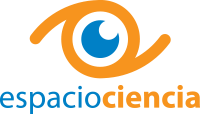LOCATION: Montevideo, Uruguay
PROJECT LAUNCHED: 2010
PROJECT LEADS:
- IEEE Educational Activities Board
- Espacio Ciencia
PROJECT OVERVIEW
E-Scientia is an interactive exhibit on electro-technology. The aim is to show high-school students the importance of electrical engineering and to display how electronic devices work, as well as who designs them and how they are manufactured. The exhibit ultimately is intended to generate interest in the electrical, electronics and computer engineering fields by mixing information in an interactive, technological setting.
The exhibit is centered on the Franklin 125 Y module and is a model of a spaceship located at the Espacio Ciencia science museum in Montevideo, Uruguay. Each participant is part of a flight mission, where they must build an electronic device to provide power, propulsion, communications, life maintenance and defense for the spacecraft. The devices are built using educational electronic kits. Prior to the building of the devices, participants undergo a basic training based on a multimedia experience. After the mission is completed, they are shown a video on IEEE. At the end, each participant receives a diploma of “Junior Engineer,” and prizes are handed out for the best performance.
The exhibit’s content has been designed by engineers in Spanish. To enhance the program, a contest to design an English-language translation of the exhibit’s contents will be held, in order to make the exhibit experience both bilingual and universally replicable. The contest will occur in three phases.
In the first phase, secondary-school students from The British School and EIHU-IAHU in Montevideo, along with science and English teachers, a psychologist, museum staff and IEEE volunteers, will assess the present material for the E-Scientia’s program website and exhibit. Once the guidelines for new content are determined, engineering students from student branches of Universidad de la República (state university), Universidad ORT (prívate university) and Universidad Católica del Uruguay (private university) will be eligible to submit to the preliminary content contest, which is the second phase. A task force, over the course of three months, will determine up to four winners.
The four finalists will then enter the third phase of contest, in which material for the website and multimedia content for the E-Scientia platform will be presented over the course of three to four months and assessed by the task force. Winners will be chosen for the web content prize ($2,500), and the multimedia content prize ($2,500). The content will be installed and tested by IEEE volunteers and secondary-school volunteers in the E-Scientia exhibit at Espacio Ciencia.
The Ministry of Culture and Education, the National Administration of Small Businesses, the National Administration of Secondary Schools and the Technological Laboratory of Uruguay (LATU) have endorsed the project.
IEEE’s E-Scientia Page
 In July 2010, the IEEE launched a new exhibit, named E-Scientia, that stimulates real-time electronics engineering at Espacio Ciencia in Montevideo, Uruguay.
In July 2010, the IEEE launched a new exhibit, named E-Scientia, that stimulates real-time electronics engineering at Espacio Ciencia in Montevideo, Uruguay.
E-Scientia is directed toward pre-university level students ages 8-16 with preliminary interest in science and engineering. The exhibit is presented in a large, space-ship like structure equipped with the latest computational, electric circuit hardware, and audio visual equipment. Students use this equipment to solve challenges posed during a simulated space flight.
Interactive Exhibit Launched at Uruguay Science Museum | July 2010
IEEE has launched an interactive science exhibit at the Espacio Ciencia museum in Montevideo, Uruguay. The E-Scientia exhibit is aimed at raising awareness among high school students about careers in electrical engineering, computer science, and technology by demonstrating how electronic devices are designed and applied. The museum, a self-styled interactive center of science and technology, is part of the Technological Laboratory of Uruguay, which works to sustain the country’s economic development through innovation.
Launched in July, the E-Scientia exhibit was developed by volunteers from the IEEE Educational Activities Board. The exhibit, meant to be visited by groups of high school students, is a 3-meter-high, 6-meter-long replica of the Apollo 11 Eagle spacecraft. Inside are five interactive stations that deal with different aspects of electrotechnology: communications, energy, propulsion, defense, and biomedicine. In addition to museum staff, volunteers from local IEEE student branches are on hand to help explain the technical concepts.
PROJECT IN-KIND SUPPORT
- IBM
- Interamericana de Computos S.A.
- Analisis de Sistemas
- Markel Engineers
